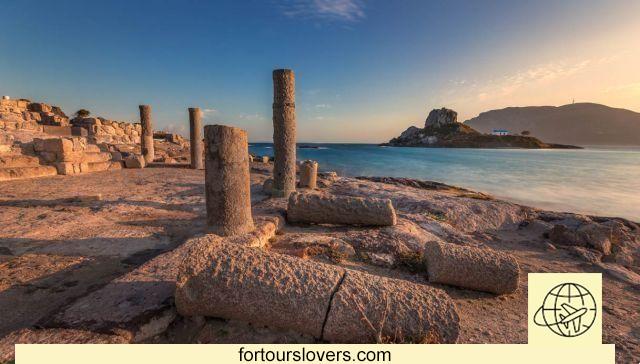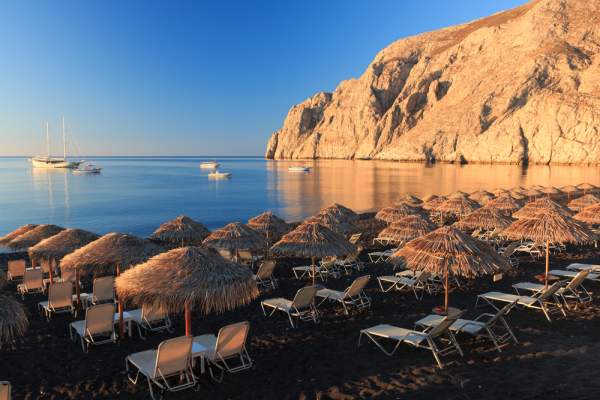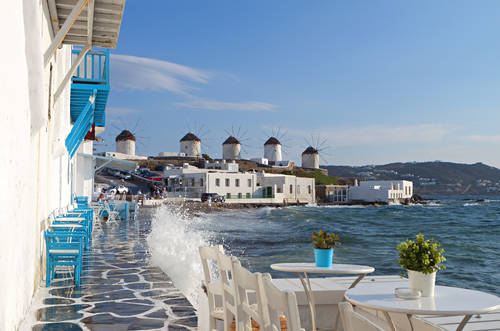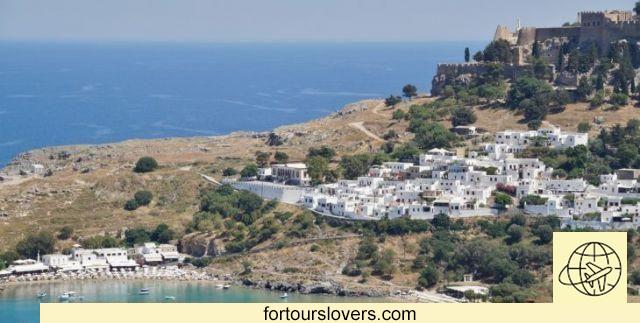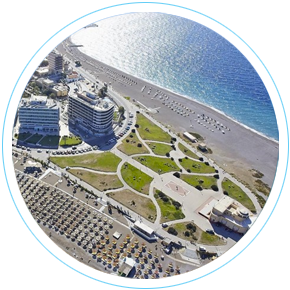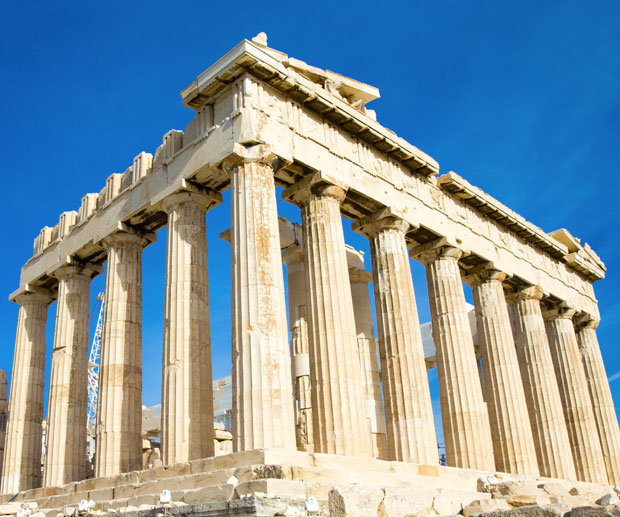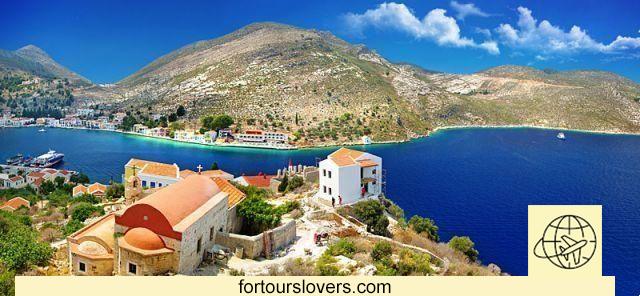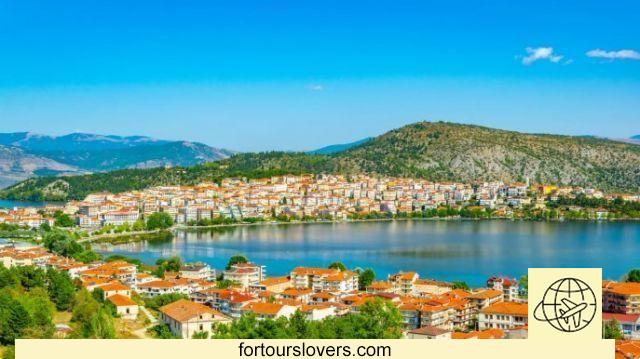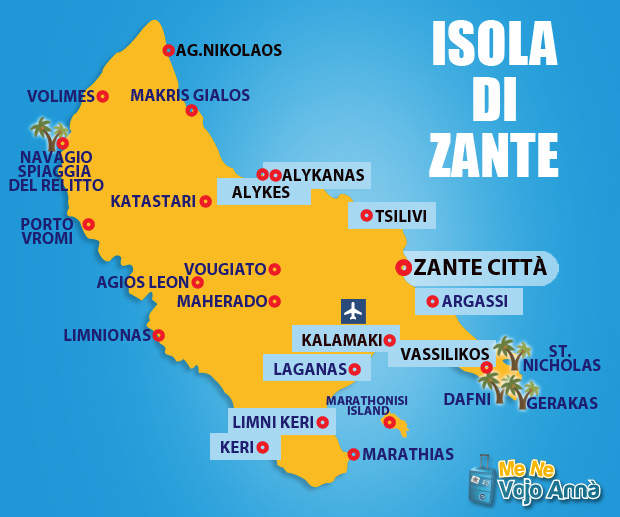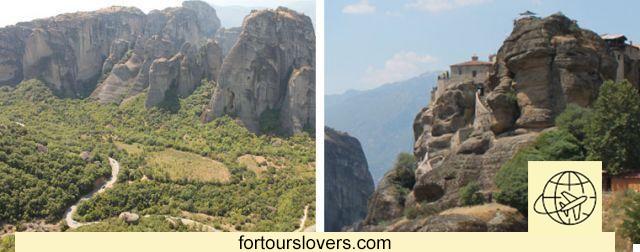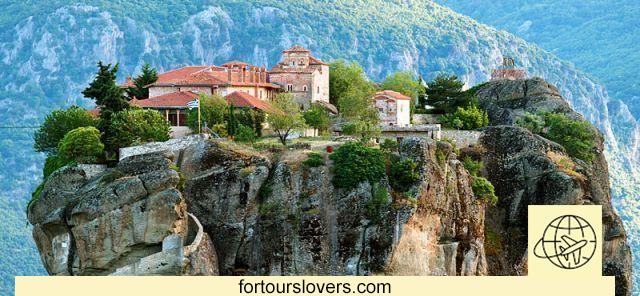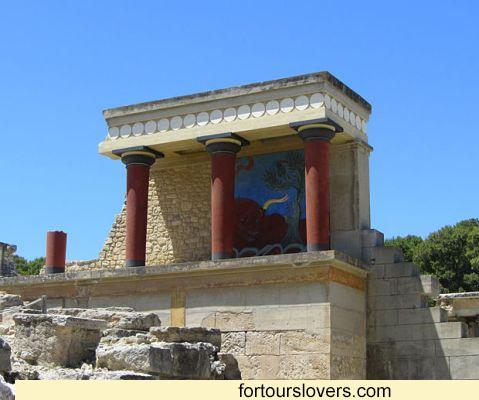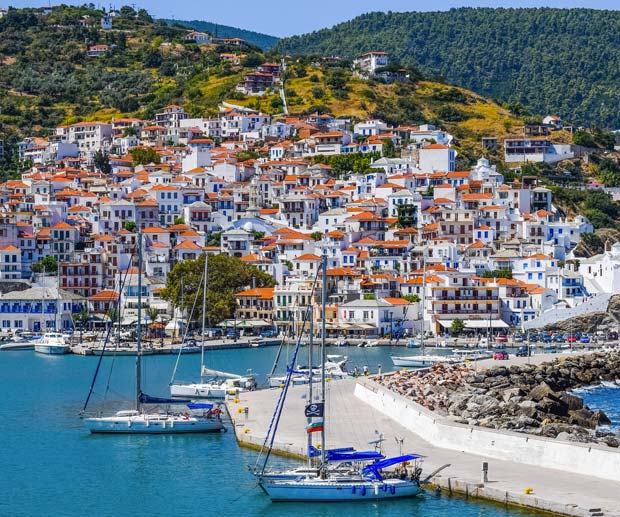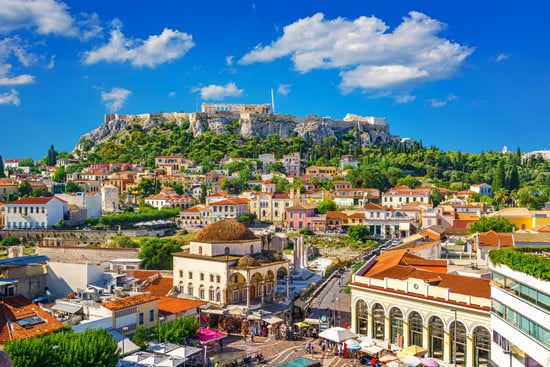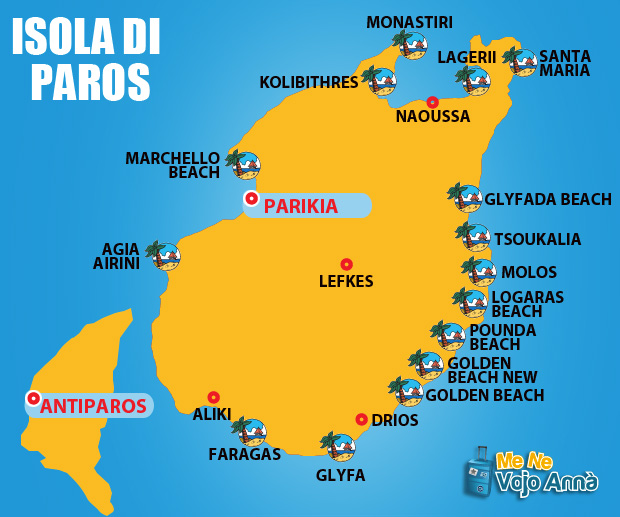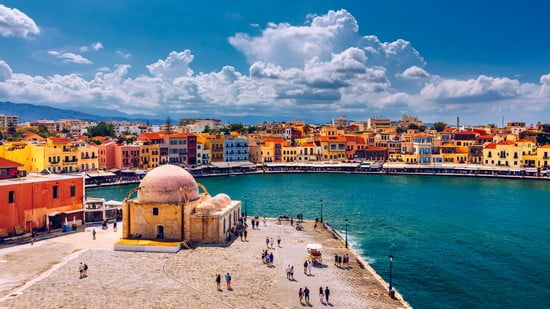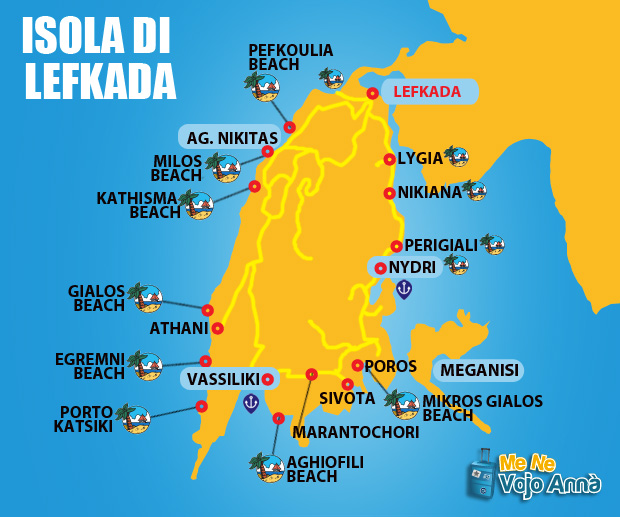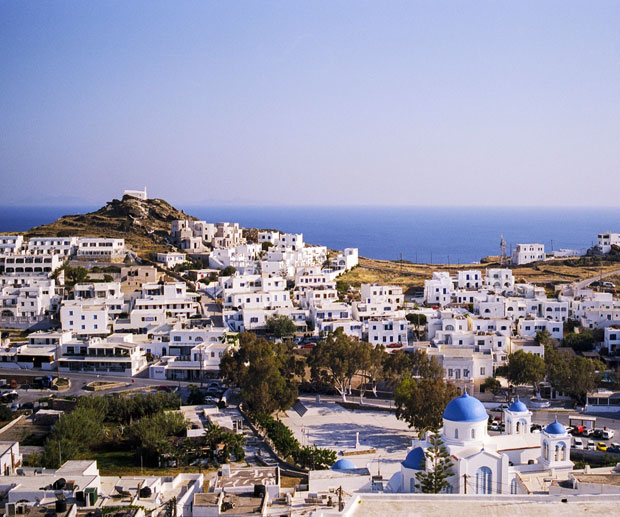Crowning a dramatic limestone cliff, theAcropolis of Athens rises above the modern city as a symbol of ancient glory, taking visitors back in time to more than 2000 years ago.
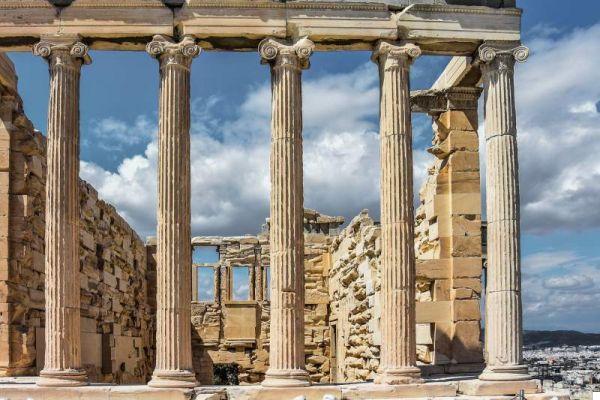
I was really excited to wander among the numerous archaeological remains, trampling in the footsteps of Socrates, Pericles and Sophocles and discovering those elements that laid the foundations of Western civilization and that I studied so much at school during the years of my high school (I admit, I did the classical high school but I swear I was not a geek!).
- 1 - Acropolis of Athens
- 2 - The Propylaeus and the temple of Athena Nike
- 3 - Parthenon
- 4 - Erechtheum and the loggia of the Caryatids
- 5 - Panorama from the Acropolis
- 6 - Targa a Glezos e Santas
- 7 - Theater of Herodes Atticus
- 8 - Temple in Hephaestus
- 9 - Rock of Areopagus
- 10 - Plate
- 11 - Acropolis Museum
- 12 - Temple of Olympian Zeus
- 13 - Tickets, combined tickets and Online tickets
- 14 - Timetables and practical information
- 15 - Guided Tours of the Acropolis of Athens
- 16 - Hotels near the Acropolis of Athens
There are so many things to see among these ancient and amblematic ruins, in addition to the Parthenon of course.
FREE TOUR OF ATHENS
Civitatis offers completely free tours of the city of Athens! You can see all the details here!
Acropolis of Athens, What to See
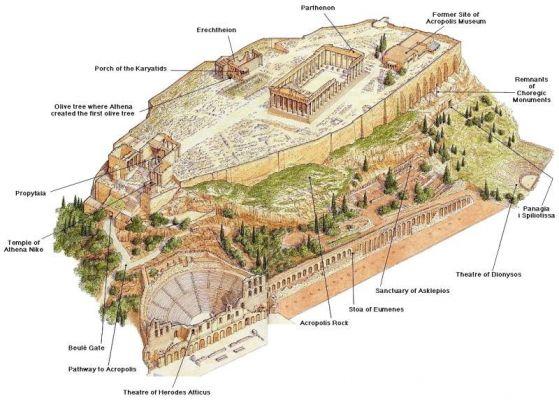
Plan of the Acropolis - Image taken from Eyewitness Travel Guide, Greece
In short, if you have arrived on this post it is because you want to organize one visit to the Acropolis of Athens and do well because it is undoubtedly one of the things not to be missed in life.
A dispassionate advice. Whether you take part in a guided tour, whether you go alone absolutely try to go either early in the morning or late in the evening. In addition to the crowds and groups of tourists you will avoid the heat that at certain times is really suffocating.
In any case, getting to the Acropolis is pleasant enough because the large avenues that line the south and west of the site (Apostolou Pavlou in Thission and Dionissiou Areopagitou in Makrianni) have been transformed into gigantic pedestrian streets with cafes and restaurants (where you can buy water or have a coffee) and the walk is quite easy.
The Parthenon and other main buildings on the Acropolis were built by Pericles in the XNUMXth century BC as a monument to the cultural and political achievements of the inhabitants of Athens. The term "acropolis" means high City and many of the cities of ancient Greece are built around an acropolis where the inhabitants took refuge in times of wars and invasions.
A bit like it once was in our castles. For this reason, the Acropolis was the heart of the city and housed the most sacred monuments: because being high up it was the easiest place to protect.
Curious fact: the Lisistrata, a comedy by Aristophanes, tells that women, tired of their men who always went to war against Sparta, "locked themselves up" in the Acropolis, doing a sex strike (I also thought of doing it with Massi sometimes, I'm sure that would work).
Fortunately, they make peace!
The Propylaeus and the temple of Athena Nike
Immediately after climbing the steps you will find yourself at Propylaeum, that is the entrance, completed in 432 shortly before the outbreak of the Peloponnesian wars. The architect was Mnesicles, a colleague of Phidias and this white marble propylaum is truly a work of art.
On your left you will find the picture gallery and on the right the tiny temple of Nike Athena or the Athena of Victory which commemorates the victory of the Athenians over the Persians.
This small temple stands on a platform that once housed a statue of Athena. Dismantled and rebuilt several times, the temple overlooks the islands of the Saronic Gulf and looking towards Piraeus on a clear day you can see the ships waiting outside the port, the islands and the mountains of the Peloponnese.
Like all ancient Greek temples, the temple was considered the abode of divinity represented by the statue inside: the temple housed the statue of Athena Nike,
a symbol of victory.
The entrance to the temple was reserved for priestesses while normal people held rituals in front of it on a small altar but could see the statue through the columns.
The curiosity of this temple is that the statue of Athena, unlike how it was usually represented, it was without wings, therefore it was called Athena Apteros (without wings).
The ancient Greek writer Pausanias later explained that the statue of Athena had no wings, so it could never leave the city.
Parthenon
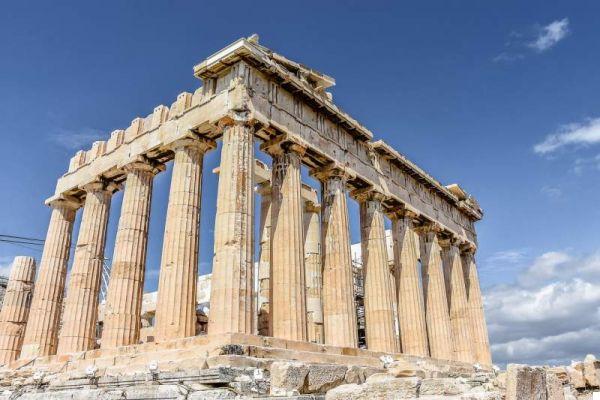
Believe me I have seen it many times in the photographs: you are never ready to grandeur of the Parthenon. The building, a symbolic monument of the Acropolis, was designed by the architects Kallikrates and Iktinos, under the supervision of Phidias. Inside the central cell was kept the gigantic statue of Athena sculpted by Phidias himself in gold and ivory.
It took 9 years to build and was completed in 438 BC.
The Parthenon also has a rather troubled history: from a temple it became a church, then a mosque and finally it was used by Turks as a deposit for gunpowder.
In 1687 the Venetians bombed it: a cannonball hit the gunpowder and detonated it destroying the central part. Thus, most of his sculptures were lost, but its basic structure remained intact.
What makes the Parthenon so fascinating is that looking at it one might mistakenly think it is made up of interchangeable pieces.
For example, columns are stones placed one on top of the other and you might think you can replace a piece of a column with any of the others. Well this is absolutely not true: each piece of the Parthenon is unique and each stone has been carved and shaped to fit perfectly with the other pieces, like a big puzzle.
Le lines that look straight are actually not. The ancient Greeks knew the rules of architecture and perspective and knew that the lines, depending on the case, had to be straight or curved. The Parthenon is the most perfect and most imitated building in the world. THE restoration visible today have been carried out over the past 30 years and could go on for another 30.
Much of the Parthenon has been dismantled and put back together with replacement parts to remedy the wear and tear of centuries, especially the last 20 years of air pollution (Athens is a very polluted city).
As it stands now, although it is a tribute to the glorious past and conquest of the ancient Athenians, it is at the same time a reminder that all that is good in man is eventually overcome by ignorance, war and starvation. of conquest.
Erechtheum and the loggia of the Caryatids
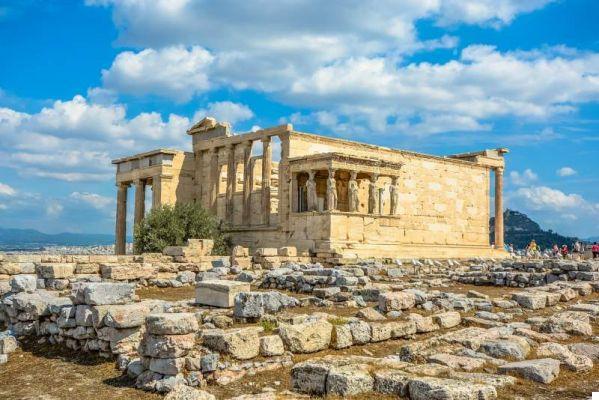
THE Erechtheum it is located in the holiest place of the Acropolis where Poseidon and Athena waged their battle over who would be the patron saint of the city. Poseidon pushed his trident into the rock (from the stories it seems that he broke a water pipe), while Athena touched the ground with a spear and grew an olive tree.
Athena was declared the victor and the great city of Athens was given to her while Poseidon, poor fellow, was given a small village in Syros.
The building contains two arcades: the one to the south is the most famous loggia of the caryatids.
Below it was the tomb of Kekrops, another legendary king of Athens. An inscription of the Erechtheion building refers to the Caryatids simply as Korai (maidens), while the name Caryatid was assigned at a later time.
Several interpretations have been advanced on the Caryatids. The most convincing supports the idea that they were part of Kekrops' tomb and that they paid homage to his glorious death.
Although not seen, the 6 statues of the girls are copies: of the originals, one was brought in 1811 by Lord Elgin to Great Britain (now in British Museum), the remaining five were replaced to prevent further damage from smog (and moved to the Acropolis Museum where they are still on display).
Actually the Erechtheion is the true religious temple on the Acropolis, which is located in what was the northeast corner of what was the original temple, burned and destroyed by the Persians in 480 BC.
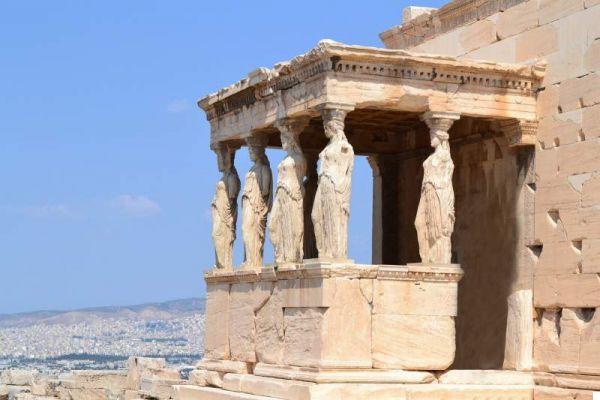
The Parthenon, although called a temple, was not actually a place of worship: it was built as a tribute to commemorate the Greek victories over the Persians and was used as a bank to hold the tribute paid by other Greek city-states. So, in other words, the Parthenon was not considered sacred, but theErechtheum si.
Panorama from the Acropolis
One of the best places to have a beautiful panorama on the city of Athens is the flag on the northeast corner of the Acropolis. Indeed the Acropolis is the ideal place to orient yourself and understand the layout of the city.
In fact, from here you can see the ceramic roofs of the houses in the Plaka below and if you sharpen your view towards Lysikratous Street you will see theArch of Hadrian, the ruins of the gigantic Temple of Olympian Zeus and Olympic Stadium nestled in a hill covered with pine trees, a green island in the midst of the gray of the concrete.
To the left of the stadium is the Zappion building and the National Gardens. To the right of it you can see another large patch of green which is the first cemetery.
On clear days you can see up to Kifissia. On the other side of the Acropolis, looking from the propylaeus towards the sea, you can see Pireos Street which connects Athens to the port.
Targa a Glezos e Santas
La targa with flag commemorates Manolis Glezos e Apostolis Santas, the two eighteen-year-old heroes who snatched the Nazi flag on the night of May 30, 1941 in protest and replaced it with the Greek one.
The plaque is interesting because these names are known not only by the Greeks, but by many Europeans: this act of courage and resistance to Nazi oppression was a source of inspiration. Later Glezos, who became a member of the Greek resistance, was sentenced to death for treason in 1948 and imprisoned for being a Communist.
After a thousand ups and downs, an escape, a thousand incarcerations and hunger strikes, he was elected in 1981 a member of the Pan-Hellenic Socialist Party (PASOK) and then, on the occasion of the European elections, a member of the SYRIZA party until he resigned in 2015.
Theater of Herodes Atticus
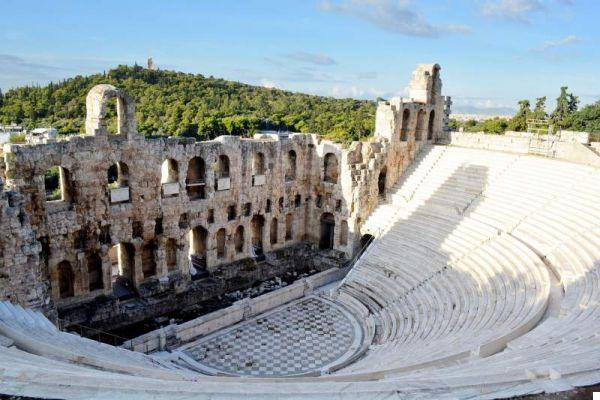
Under the Acropolis is the theater of Herodes Atticus built by the Romans in 161 AD and still used today for classical music concerts, ballets and cultural performances.
Later, the Theater of Dionysus it is the first stone theater and home of Sophocles, Aeschylus, Euripides and Aristophanes. It was rebuilt around 342 BC by Lykourgos and then later enlarged by the Romans to be used for gladiator fights.
What to see instead around the Acropolis?
Thission: the Temple to Hephaestus
The small temple known as Thission it was built in 449 BC and is practically intact. Apparently named Thission in honor of Theseus (his exploits were engraved on the frieze) it is now believed that it was actually a temple for Hephaestus and Athena.
The temple was used as a church dedicated to St. George, known as St. George the Lazy because it was only open one day of the year. The Thission neighborhood is full of cafes, bars and restaurants and, like other areas around the Acropolis, it has been made welcoming for pedestrians, its streets transform into walkways and are graced with trees and flowers.
Areopagus rock
Under the Acropolis is the Areopagus rock. The steps are very slippery so be careful as you go down. From here you have a great view of the Agora, Plaka, Monastiraki, Omonia and a good chunk of the city of Athens.
If you are romantic this is a great place to watch the sunset. This is where St. Paul spoke to the people of Athens in 51 AD and his words are engraved on the tablet set in the stone.
Plate
Then go down the hill into theAncient Agora below.
Part of it is free and you can cross it to return to Adrianou Street, or you can pay the entrance fee and walk the streets of ancient Athens. If you decide to spend some time in the ancient Agora, take a look at the reconstructed one Stoa di Attalos, now a museum displaying many of the everyday objects found in the area.
A curious fact: the ancient agora that to the inexperienced eye looks like a jumble of rocks and pieces of broken pavement (even for trained eyes) was once a lively neighborhood and part of the Plate e Monastiraki.
The American school of classical studies arrived in the XNUMXs and threw everyone out of their homes, demolished the buildings that had stood there for centuries to excavate. Maybe they could have left something more instead of destroying almost everything, but to be honest it is archaeological excavations such as the agora that give Athens much of its precious green space.
Acropolis Museum
Opened in the 2009, the Acropolis Museum is a must see cultural attraction in Athens.
Under the Acropolis hill, about 300 meters from the archaeological site, this incomparable museum contains one of the most precious collections of ancient Greek art in Athens.
Opposite the museum is an excavation site where archaeologists can be seen at work. After passing this "archaeological laboratory", tourists arrive at the entrance of the elegant modern building designed by architects Bernard Tschumi and Michael Photiadis.
Illuminated by natural light, the extensive exhibition galleries show approx 4.000 priceless items.
Most of the objects in the collection were discovered in the archaeological sites of the Acropolis. The collection covers the Archaic period, from the XNUMXth century BC to the XNUMXth century BC, and the Classical period, from the XNUMXth century BC to the XNUMXnd century BC.
The superstars of the museum's collection are the original caryatids of the Erechtheion Moschophoros statue of the sixth century BC of a young man carrying a calf, the relief of the fifth century BC of Athena in mourning and the series of reliefs of the Temple of Athena.
Indirizzo: 15 Dionysiou Areopagitou Street, Athens
Temple of Olympian Zeus
500 meters from the Acropolis and 700 meters from Syntagma Square, the heart of the city, is the Temple of Olympian Zeus.
What remains of this temple today makes us understand that the project was very ambitious and that the temple was one of the largest ever built in ancient times.
Its construction began approximately 500 years before Christ, and went on for centuries, between moments of abandonment and resumption of work. It was finally completed by the Emperor Hadrian in 131 AD.
The temple was later dismantled, as has often happened in many ancient works in history, to reuse the stones as building materials.
Today of the 104 columns only 15 remain, two in the southwest corner and the remaining in the southeast corner.
Tickets, Cumulative Tickets and Online Tickets
The price of ticket to the Acropolis is 20 € per person. The price is reduced by 50% during the winter (from November 1st to March 31st).
Children under 18 (with ID) and students pay € 10 for their tickets (€ 5 during the winter).
The entrance to the Acropolis not only gives access to the Citadel (where you can see the Parthenon and the Erechtheion), but also to the North and South slopes, where you will also find the Odeon of Herodes Atticus and the Theater of Dionysus among other things. .
If you are also going to visit some of the main archaeological sites in Athens, I recommend that you get the cumulative ticket. This is an official ticket, as it is produced and sold by the Greek Ministry of Culture, the body that manages these sites.
For this it is It is possible to buy the cumulative ticket at the entrance to the archaeological sites: currently, it is NOT possible to buy the special online ticket nowhere.
The cost of the cumulative ticket, per person, is € 30 (there is no winter reduction) and is so called as it includes in a single ticket:
- Entrance to the Acropolis
- Agora Museum
- Roman Agora
- Temple of Zeus
- Pottery
- Lykeion archaeological site
- Hadrian's Library
The special ticket DOES NOT include the Acropolis Museum, or any other museum in Athens.
To make entry to archaeological sites cheaper for local residents, the Greek government recently passed a law under which entry to all sites and museums managed by the Ministry of Culture would be reduced by 50% during the winter ( i.e. from November 1st to March 31st).
This does not apply to the combined ticket, which remains € 30 all year round.
It goes without saying then that during the winter it is cheaper to buy tickets individually at the ticket office of each site rather than buying a combined ticket.
Timetables and practical information
Opening time: 08: 00-17: 00. last admission at 16:30. From 1 April the archaeological site remains open until 19:00
Closing days: January 1st, March 25th, May 1st, Easter Sunday, December 25th, December 26th
For people with reduced mobility, or for single parents with two or more children, an elevator is available about 350 meters from the main entrance.
Elevator users should contact +30 210 3214172 in advance for details and terms of use.
The lift is not available in extreme weather conditions and strong winds. From 1 December 2017 the lift operates from 09:00 to 14:00.
Check before leaving for timetables and updated information at website of the Ministry of Culture.
Guided Tours of the Acropolis of Athens
Although a ticket to the Acropolis or the combined ticket described above cannot be purchased in advance online, for only € 26 it is possible buy a ticket to the Acropolis and a welcome chat.
This ticket includes admission to the Acropolis, allows you to skip the queues and you will have a 30 minute introductory talk by a local guide. This is a tour sold a lot and is often sold out very early.
Alternatively, you can choose here among many different tours on Getyourguide which have different durations and different things included.
By taking one of these you will get priority entry by skipping the queue, but the entries are not always included (the reason is that some people may already have a multi-site pass, or be entitled to discounts). For example, a two-hour afternoon guided tour of the Acropolis costs € 32.
Far one of the most popular tickets and by far what I personally believe is the best value for money, is the five hour tour of Athens, the Acropolis and the Acropolis Museum.
For only € 78 you get a guided tour (available in English, Spanish and Italian) with a real person, not an audio guide, of Athens (includes in the visit the Panathinaikos stadium, the royal gardens and the former royal palace), the Acropolis and the Acropolis Museum. the cost for the Acropolis and the museum are included in the tour price (€ 78)!
FREE TOUR DI ATENE !!!
Civitatis offers completely free tours of the city of Athens! You can see all the details here!
Hotels near the Acropolis of Athens
If you like walking choose one hotel very close to the Acropolis it suits you both because you can walk there so you don't have to spend money on transport, and because it allows you to go very early before the groups arrive (we don't talk about the crowds when the cruise ship groups arrive).
All the hotels in the Makrianni, Plaka and Monastiraki areas are close enough to reach the Acropolis on foot, but if you want to know which are the closest of all, check out the list below:
Cheap Hotels
Hotel Attalos (my choice): simple, but with attention to detail, this hotel is famous for the kindness of the staff and for its location in the heart of athens. The wifi is free and the typical Greek breakfast. See here photos, prices and availability.
Pella Inn (hostel): this hostel is located a stone's throw from the Monastiraki metro station and is very convenient for both the airport and the port of Piraeus. The roof terrace is beautiful. See here photos, prices and availability.
Hotel Byron (2 stars): welcoming although not all reviews are positive (hence the average rating of 7.3 on booking.com), it is a good choice. The staff are very kind and the view from the roof terrace literally takes your breath away. See here photos, prices and availability.
AthenStyle (hostel): all rooms and dorms have air conditioning and a small kitchenette. Most of them have a view of the Acropolis, the staff is friendly and helpful. A good choice for low budget travelers. See prices and availability here.
Athens Backpackers (hostel): hostel with both dorms and private rooms or with private or shared bathroom. The roof terrace (overlooking the Acropolis) is the ideal place to socialize and make new friends. See prices and availability here.
Average and Luxury prices
Hotel Phidias (3 stars): first a 2 star, then upgraded to 3, it is a very good hotel with rooms that have a private balcony overlooking the city or the garden. Each bedroom has a private bathroom with shower. See prices and availability here.
Philippos Hotel (3 stars): The hotel rooms are sunny and modern, furnished with elegant fabrics and earthy colors. Each is equipped with air conditioning, TV and refrigerator. Some rooms have Acropolis view from their windows. See here prices, photos and availability.
Acropolis Hill Hotel (3 stars): A new hotel with very good reviews. The rooms all have private balconies overlooking the Acropolis, Filopapou Hill and the whole city of Athens. Wi-Fi is free and available throughout the hotel. See here prices, photos and availability.
Herodion Hotel (4 stars): one of the top picks in athens is this wonderful hotel at the foot of the Acropolis with rooftop hot tubs. In short, the top of the top! See here prices, photos and availability.
Divani Palace Acropolis (5 stars): the pinnacle of luxury. All rooms have air conditioning, the rooftop restaurant has an amazing view of the Acropolis in the evening. If you go there send me some photos! See here prices, photos and availability.




